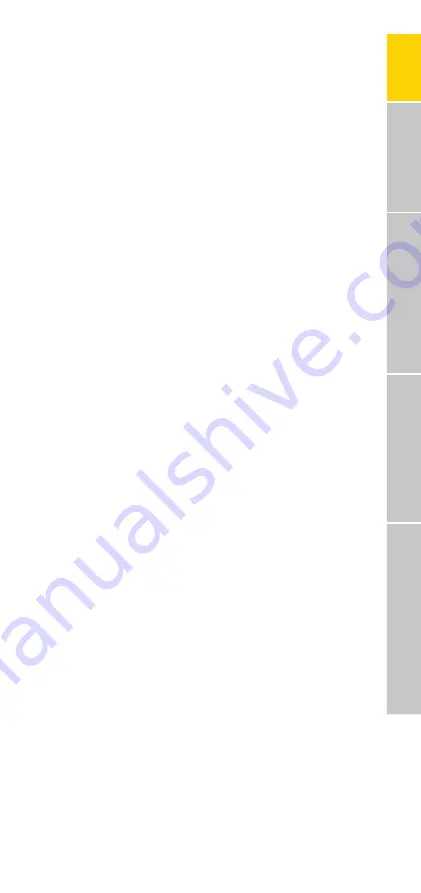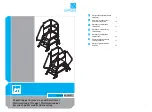
FIGURE 2C.
Do not erect ladder on heavily
contaminated ground.
FIGURE 2D.
Ladders with steps/rungs should be used
so that the steps/rungs are in a level, horizontal position.
Safety Step Platforms
FIGURE 2E.
Ensure the platform deck has fully engaged
the rung when lowering deck into position.
Extension & Single Ladders
■
Do not use the ladder as a bridge.
■
Secure the top and/or bottom of the ladder if possible.
■
Ensure top of the ladder makes contact with a structure
that is in good condition.
Fall Control System
(FED-FC)
■
Secure the ladder to a ground or wall fixing.
FIGURE 2F.
To ensure correct angle, use the angle
indicator marked on the rail and/or the level-bubble in
the TerrainMaster base.
FIGURE 2G.
Ladders used for access to a higher level
shall be extended at least 1 metre above the landing
point and secured if necessary.
FIGURE 2H.
Only use the ladder in the direction indicated.
FIGURE 2I.
Do not lean the ladder against unsuitable
surfaces. For pole work use a Branach Pole Strap or
Pole Chain combined with a Top Lash.
FIGURE 2J.
Do not stand on the top 3 steps/rungs of
a leaning ladder.
FIGURES 2K.
Ensure the latch has fully engaged the rung
when extending the ladder. If the latch is not parallel with
the ladder, adjust so it is engaged fully.
TerrainMaster
■
Always use with TerrainMaster feet in an open position.
FIGURE 2L.
Do not exceed the level the TerrainMaster can
operate in (15° slope). Use the built-in level bubble or spirit
level to ensure the platform ladder steps are level.
05
G
EN
ER
AL
TE
RR
AIN
M
AS
TE
R
SAF
ET
Y S
TE
P P
LA
TF
ORM
S
FA
LL C
O
N
TR
O
L S
YS
TE
M
EX
TE
N
SIO
N & S
IN
G
LE L
AD
D
ER
S



































